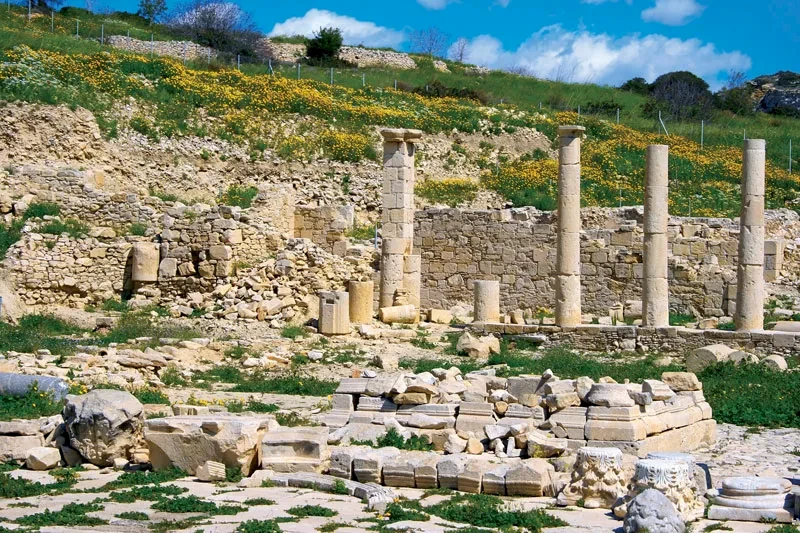Ancient Traces of Human Activity Unearthed in Limassol
Archaeologists have discovered evidence of human activity dating back to the 1st millennium BC on the western terrace of the Amathus Acropolis in Limassol.
According to the Department of Antiquities, the remains of buildings and fragments of pottery were found beneath layers of collapse at two separate points on the site.
Excavations began in April following a geophysical survey, which suggested the possible presence of ancient structures. In one trench, researchers uncovered a dense layer of tiles, likely dating to the Late Roman period. In another, they found collapsed stones believed to be part of a dry-stone wall. Pottery recovered from both trenches was mixed and came from different historical periods.
Amathus was one of the most important city-kingdoms of ancient Cyprus. The newly uncovered artifacts—including roofing tiles, commercial amphorae, and a wall section running north to south—point to the possibility that this area was settled much earlier than previously believed. The western terrace of the acropolis may have been in use as far back as the 1st millennium BC.
The excavation is part of a broader project led by Dr. Anna Cannavo, supported by the French School at Athens, the French Ministry of Foreign Affairs, and the HiSoMA research center in Lyon.

You may also be interested in:
- Holiday night under control: Cyprus police conducted large-scale raids
- Christmas night with fire: an arson on the highway at Kesari–Ayios Athanasios, teenager arrested
- Omonia president announces progress on own stadium project
- Dozens of winter swimmers celebrated Christmas by taking a dip in Kato Paphos
- Police detained a teenager during an attempted arson at a roundabout in Limassol


